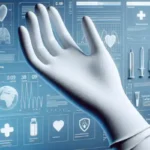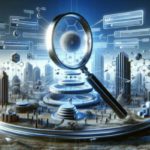Many individuals often associate a medical check-up with basic procedures like blood pressure assessments and temperature checks. However, Traditional Chinese Medicine (TCM) adopts a fundamentally different approach to evaluating health. What many may not realize is that TCM practitioners can uncover health issues merely by examining your pulse or assessing your tongue. Intriguingly, there are over 28 unique pulse qualities that these skilled practitioners can identify using their trained fingertips. While this may seem unconventional, this ancient practice delves deeper than visible symptoms, revealing patterns that contemporary medical tests often overlook and miss.
Explore the Significance of TCM Diagnostic Techniques in Holistic Health
The diagnostic methods utilized in Traditional Chinese Medicine (TCM) showcase a sophisticated understanding of human health that diverges sharply from Western medical diagnostic practices. TCM fundamentally focuses on identifying patterns of disharmony within the body’s interconnected systems, perceiving health as a dynamic equilibrium of energy and various physiological functions. This approach emphasizes the importance of understanding health in a holistic context rather than treating isolated symptoms.
 The Holistic Philosophy Behind TCM Diagnosis
The Holistic Philosophy Behind TCM Diagnosis
Unlike conventional medical practices that frequently address isolated symptoms, Healthdirect Australia emphasizes that TCM diagnosis aims to comprehend the complete individual’s physical, emotional, and energetic landscape. Practitioners meticulously observe the intricate interrelations among the body's systems, striving to grasp underlying imbalances rather than merely addressing superficial signs. This comprehensive observation fosters a deeper understanding of overall health.
Key principles that underpin TCM diagnostics encompass:
-
Understanding the interdependence of bodily systems and their functions
-
Grasping the flow of energy (Qi) through meridian pathways, which connect various organs
-
Assessing the balance between Yin and Yang energies, essential for maintaining health
Exploring the Primary Diagnostic Techniques of Traditional Chinese Medicine
Practitioners of TCM utilize a diverse range of advanced diagnostic techniques to gather comprehensive insights into an individual's health. These methodologies include:
Pulse Diagnosis: This intricate technique involves analyzing the characteristics of blood vessels at different wrist locations, interpreting subtle variations that may indicate potential health issues and imbalances.
Tongue Examination: Practitioners assess the tongue's color, coating, shape, and moisture levels as critical indicators of internal organ function and overall systemic health, revealing important health insights.
Visual and Auditory Assessment: By observing the patient's complexion, body movements, vocal qualities, and emotional expressions, practitioners gain additional diagnostic information that can inform treatment strategies.
Questioning and Medical History: Thorough patient interviews explore lifestyle, emotional states, dietary habits, and specific symptoms, enabling the construction of a comprehensive health profile that informs treatment planning.
These integrative diagnostic methods empower TCM practitioners to develop personalized treatment strategies that address the underlying causes of health imbalances. This approach fosters overall wellness that transcends mere symptom management, aiming for holistic recovery.
Investigating the Theoretical Foundations of TCM Diagnosis
The diagnostic methodology within Traditional Chinese Medicine (TCM) is firmly grounded in a rich philosophical framework that perceives human health as a complex, interconnected system of energy and balance. Unlike modern Western medical paradigms, TCM offers a holistic perspective that integrates physiological, psychological, and energetic components of human experience, thus enriching the understanding of health and illness.
Unpacking the Fundamental Principles of TCM Theory
Research conducted by the National Institutes of Health illuminates the intricate philosophical foundations that shape TCM diagnostic methodologies. The core theoretical principles consist of several essential conceptual frameworks that guide practitioners in their understanding of health and disease.
These foundational ideas encompass:
-
Qi (Life Energy): The vital energetic force circulating throughout the body, crucial for health
-
Yin and Yang: Complementary forces that symbolize dynamic balance and interaction, essential for wellbeing
-
Five Elements Theory: Describing the interconnected natural and physiological processes that govern health
Grasping Energy Flow and Systemic Balance in TCM
Within TCM's philosophical framework, health transcends mere absence of disease; it embodies a state of harmonious energy circulation. Qi is the vital life force that flows through meridian pathways, connecting various bodily systems and organs. When this energy becomes blocked or imbalanced, practitioners believe it can lead to both physical and emotional disturbances, highlighting the importance of maintaining smooth energy flow.
The concept of Yin and Yang illustrates the complementary yet opposing energetic qualities residing within the body. Yin represents passive, cooling, and receptive attributes, whereas Yang embodies active, warming, and expansive energies. Optimal health is achieved when these forces maintain a dynamic equilibrium, ensuring balanced functioning.
The Five Elements Theory provides another sophisticated framework for diagnostics, linking natural elements (Wood, Fire, Earth, Metal, Water) with specific organ systems, emotions, and physiological functions. Each element interacts with others to create or control cycles, giving practitioners a nuanced approach to understanding systemic relationships and identifying potential imbalances affecting health.
Below is a table that compares key theoretical foundations within Traditional Chinese Medicine, elucidating each concept’s focus and significance in the diagnostic process, enriching the understanding of health.
These theoretical foundations elevate TCM diagnosis from a mere symptomatic evaluation to a thorough exploration of an individual’s energetic landscape. This depth enables practitioners to devise personalized treatment strategies that address the root causes of both physiological and emotional disharmony, fostering true healing.
Essential Techniques Employed in TCM Diagnosis
Practitioners of Traditional Chinese Medicine (TCM) utilize a sophisticated array of diagnostic techniques that surpass standard medical evaluations. These methods provide a comprehensive understanding of an individual’s health by examining various interconnected bodily signals and energetic patterns, paving the way for effective treatment.
An In-Depth Examination of the Four Core Diagnostic Methods
The Sydney Institute of Traditional Chinese Medicine identifies four primary diagnostic approaches that form the foundation of TCM diagnostic practice:
-
Observation (Wang): Visual assessment of physical appearance and demeanor
-
Listening and Smelling (Wen): Evaluating vocal qualities and body odors to gain insight into health
-
Questioning (Wen): Collecting detailed patient history and exploring symptoms thoroughly
-
Palpation (Qie): Conducting assessments through touch, primarily focusing on pulse examination
Comprehensive Diagnostic Techniques in TCM Practice
pulse diagnosis stands as one of the most intricate methods within TCM. Practitioners evaluate the characteristics of blood vessels at various wrist positions, interpreting subtle variations that may indicate potential health conditions. Each pulse position corresponds to specific organ systems, allowing practitioners to effectively map complex energetic imbalances that could be affecting health.
Tongue Examination provides critical insights into diagnostics. Practitioners assess the tongue’s color, coating, shape, and moisture levels as indicators of internal organ functioning. The appearance of the tongue can reveal essential information regarding systemic health, including indications of inflammation, digestive issues, and overall energy balance, guiding treatment decisions.
Visual Assessment involves observing the patient’s complexion, body movements, and emotional expressions. Practitioners look for subtle signs of energy disruption, such as variations in skin tone, muscle tension, and non-verbal communication cues that may suggest underlying health challenges. These visual cues can be integral to a thorough diagnosis.
These integrated diagnostic techniques empower TCM practitioners to formulate personalized treatment strategies aimed at facilitating natural recovery. This approach addresses the root causes of health imbalances and seeks to restore harmony, rather than merely treating surface-level symptoms.
Below is a table summarizing the four primary diagnostic methods in Traditional Chinese Medicine, highlighting their core focus and examples of what practitioners assess or observe during evaluations, enriching the diagnostic process.
| Diagnostic Method | Core Focus | Examples of Assessment |
| Observation (Wang) | Visual assessment of physical appearance and demeanor | Complexion, body movements, emotional signs |
| Listening and Smelling | Evaluation of vocal qualities and odors | Voice tone, breathing sounds, body odor |
| Questioning (Wen) | Detailed patient history and symptom exploration | Lifestyle, emotions, diet, medical history |
| Palpation (Qie) | Assessment through touch, primarily pulse | Pulse quality, tenderness, temperature |
Discover the Real-World Benefits of TCM Diagnosis in Health Care
The diagnostic approach in Traditional Chinese Medicine (TCM) transcends mere theoretical discussions, providing practical health insights that enhance modern medical practices. By merging ancient wisdom with contemporary knowledge, TCM presents nuanced strategies for addressing complex health challenges that may not respond to conventional treatments.
Implementing Comprehensive Holistic Health Management Strategies
Healthdirect Australia highlights TCM’s comprehensive methodology toward health management, which prioritizes prevention and systemic balance over isolated symptom treatment. This thorough approach empowers practitioners to identify potential health disruptions before they escalate into more severe conditions, ultimately promoting early intervention and proactive care.
Key applications where TCM diagnosis proves practical include:
-
Management of chronic conditions through tailored interventions
-
Support for stress and emotional health, addressing psychological needs
-
Strategies for preventative wellness, encouraging healthy lifestyles
-
Complementary treatment for intricate health issues, enhancing conventional therapies
Focused Health Interventions for Specific Concerns
Pain Management is a prominent area where TCM diagnosis delivers targeted interventions. Comprehensive pain management strategies leverage diagnostic insights to create personalized treatment plans that address the underlying energy imbalances contributing to chronic discomfort, providing long-lasting relief.
Metabolic and Digestive Health significantly benefits from TCM diagnostic techniques. Practitioners can pinpoint subtle imbalances in the digestive system through tongue examination and pulse diagnosis, facilitating early intervention and lifestyle recommendations that support optimal metabolic functioning and digestive wellness.
Emotional and Neurological Wellness is another crucial area where TCM diagnosis provides unique insights. By recognizing the connections between physical symptoms and emotional states, practitioners can develop holistic approaches that nurture neurological health and emotional stability, promoting overall wellbeing.
TCM diagnostic methods continue to evolve, with modern research exploring innovative ways to integrate traditional knowledge with contemporary scientific methodologies. This ongoing development ensures that TCM remains a dynamic approach, responsive to the comprehensive understanding and maintenance of human health.
Unlocking Enhanced Athletic Performance and Recovery Through TCM Diagnosis
The diagnostic methods of Traditional Chinese Medicine (TCM) offer athletes and active individuals a sophisticated framework to comprehend their body’s performance, recovery, and potential vulnerabilities. By analyzing intricate energy patterns and systemic interactions, TCM provides insights that surpass conventional sports medicine assessments, offering a holistic understanding of athletic health.
Gaining In-Depth Insights into Performance and Recovery
Healthdirect Australia emphasizes TCM’s holistic approach to health, which is especially beneficial for athletes striving for comprehensive performance optimization. The diagnostic techniques employed in TCM enable practitioners to identify subtle energy imbalances that may negatively affect athletic performance before they manifest as significant physical limitations.
Key benefits for athletes include:
-
Early identification of potential energy blockages, allowing for timely interventions
-
Customized recovery strategies tailored to individual needs
-
Comprehensive insights into physiological stress, promoting effective management
-
Proactive management of potential injury risks, enhancing overall safety
Specific Support for Enhancing Athletic Performance
Injury Prevention is a crucial area where TCM diagnosis demonstrates remarkable benefits. Recovery strategies for sports and injury support utilize diagnostic techniques to identify potential muscular and energetic weaknesses, enabling athletes to address underlying imbalances before they lead to serious injuries and setbacks.
Metabolic and Energy Management is another vital aspect where TCM offers unique insights. Pulse and tongue diagnostics can reveal nuanced information regarding an athlete’s metabolic efficiency, stress levels, and nutritional requirements, allowing for more precise training and recovery protocols tailored to individual needs.
Neurological and Emotional Resilience also plays a significant role in athletic performance. TCM diagnostic methods assist practitioners in understanding the complex relationships between physical exertion, emotional conditions, and overall energy balance, supporting athletes in maintaining peak mental and physical states conducive to high performance.
By merging traditional diagnostic wisdom with modern insights into human physiology, TCM equips athletes with a sophisticated framework to optimize and enhance their physical capabilities, paving the way for improved performance and recovery.
Ready to Customize Your TCM Diagnosis Experience in Melbourne?
Understanding how TCM diagnosis identifies imbalances in Qi, Yin, and Yang, along with the internal environment of your body, can lead you to seek guidance that genuinely values your unique health story. If you find yourself grappling with persistent pain, stress, fatigue, or performance plateaus, it is completely normal to feel frustrated with short-term solutions that overlook your entire system. At JG Alternative Healthcare, every care plan is customized using the traditional techniques discussed in this article, including detailed pulse and tongue analysis, lifestyle discussions, and holistic strategies tailored to your needs.
If you are looking for professional assistance for issues such as musculoskeletal pain, sports recovery, neurological tension, or overall wellbeing, why not take the next step today? Visit JG Alternative Healthcare to explore our acupuncture, natural recovery options, and sports injury support services. Schedule your initial consultation and discover a registered approach to TCM diagnosis that prioritizes your personal needs and health goals.
Frequently Asked Questions About TCM Diagnosis and Its Benefits
What Are the Key Diagnostic Methods Employed in TCM?
TCM practitioners utilize several essential diagnostic methods, including pulse diagnosis, tongue examination, visual and auditory assessments, and comprehensive patient questioning to gather extensive health insights that inform treatment.
How Does TCM Conceptualize Energy Balance Within the Body?
TCM emphasizes the importance of Qi, the vital life energy, and the balance between Yin and Yang energies. Health is perceived as a dynamic equilibrium of these energies, where any blockages or imbalances can lead to both physical and emotional disturbances, affecting overall health.
What Significance Does Tongue Examination Hold in TCM Diagnostic Practices?
The tongue examination in TCM is crucial, as practitioners evaluate aspects such as color, coating, shape, and moisture levels to assess the functioning of internal organs and overall systemic health, providing valuable insights for treatment.
How Can Athletes Gain from TCM Diagnostic Techniques and Insights?
Athletes can obtain valuable insights into their performance and recovery from TCM by identifying energy imbalances and creating personalized strategies for injury prevention, metabolic management, and emotional resilience, enhancing their training and performance.
Resources for Further Exploration of TCM Practices
-
Managing Chronic Pain Naturally: Essential Insights – JG Alternative Healthcare
-
The Power of Acupuncture for Natural Recovery – JG Alternative Healthcare
-
Chinese Medicine – An Overview – JG Alternative Healthcare
-
Contact JG Alternative Healthcare | Acupuncture Melbourne for further assistance
The Article: TCM Diagnosis Methods to Uncover Health Insights first appeared on https://writebuff.com
The Article TCM Diagnosis Methods for Revealing Health Insights Was Found On https://limitsofstrategy.com


